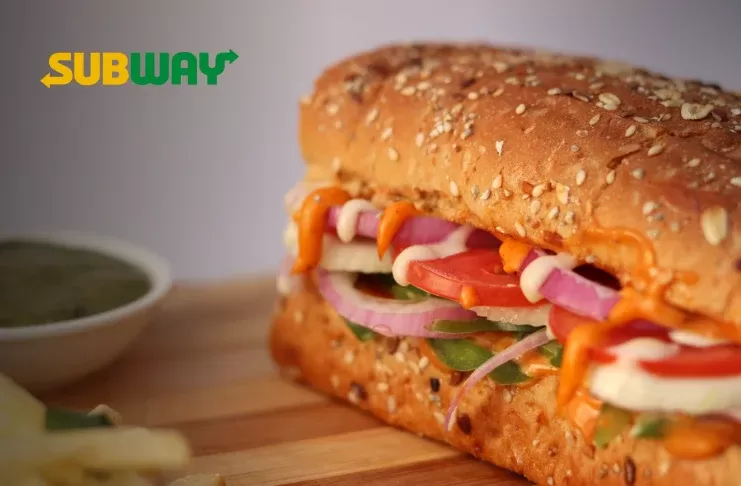
Subway, a global fast-food giant, constantly navigates a complex and evolving business landscape. Understanding this landscape requires analyzing external factors that influence its operations and strategic decisions. A PESTEL analysis provides a framework for this, examining Political, Economic, Social, Technological, Environmental, and Legal influences. This article delves specifically into the crucial role of Social and Legal factors within Subway’s PESTEL framework, exploring how these elements shape the company’s strategies and overall success. How has Subway adapted to changing social trends and legal regulations? Let’s explore the answers together.
Table Content:
Social Influences on Subway’s Strategy
Social factors encompass cultural values, lifestyle trends, health consciousness, and demographic shifts. These elements significantly impact consumer behavior and, in turn, Subway’s operations. For instance, the growing health consciousness among consumers has directly influenced Subway’s marketing and menu development. By positioning itself as a healthier fast-food alternative, Subway caters to this trend, emphasizing fresh ingredients and customizable sandwiches. What are some specific examples of Subway responding to social trends? Consider the rise of vegetarianism and veganism. Subway has introduced plant-based options to cater to these growing dietary preferences. Furthermore, changing family structures and busier lifestyles have contributed to the demand for quick and convenient meal options, a demand Subway directly addresses.
Impact of Changing Consumer Preferences
Consumer preferences are constantly evolving, driven by factors such as social media, celebrity endorsements, and emerging health trends. Subway must stay attuned to these shifts to remain competitive. How does Subway keep up with these changes? Market research plays a vital role, allowing the company to understand consumer needs and adapt its offerings accordingly. For example, the increasing demand for personalized experiences has led Subway to offer greater customization options, allowing customers to create sandwiches tailored to their individual tastes. Moreover, social media platforms have become essential tools for Subway to engage with its target audience, build brand loyalty, and respond to customer feedback.
 Subway's Social Media Engagement
Subway's Social Media Engagement
Legal Factors Impacting Subway’s Operations
Legal factors encompass regulations related to food safety, labeling, employment, franchising, and advertising. Compliance with these regulations is crucial for Subway to maintain its operational license and avoid legal repercussions. Food safety regulations dictate strict guidelines for handling, preparing, and storing food. Subway must adhere to these regulations to ensure the health and safety of its customers. What happens if Subway fails to comply with these legal standards? The consequences can include hefty fines, temporary closure, and reputational damage.
Navigating Food Safety and Labeling Regulations
Food safety and labeling regulations are particularly stringent in the fast-food industry. Subway must meticulously track its supply chain, ensuring the quality and safety of its ingredients. Accurate labeling is also essential, providing consumers with clear information about nutritional content, allergens, and ingredients. How does Subway ensure accurate labeling across its vast franchise network? The company provides detailed training programs and resources to franchisees, emphasizing the importance of adhering to labeling requirements. Furthermore, regular audits and inspections help maintain compliance and ensure consistency across all Subway locations.
Franchise Agreements and Legal Obligations
Subway operates primarily through a franchise model, which presents unique legal challenges. Franchise agreements outline the rights and responsibilities of both the franchisor (Subway) and the franchisee. These agreements cover aspects such as brand usage, operational standards, and royalty payments. What are some key legal considerations for Subway franchisees? Franchisees must adhere to Subway’s brand guidelines, maintain quality standards, and pay royalties based on sales. Legal disputes can arise if either party breaches the terms of the franchise agreement. Subway must carefully manage its relationships with franchisees to ensure smooth operations and avoid legal conflicts.
 Subway Franchise Agreement Signing
Subway Franchise Agreement Signing
The Interplay Between Social and Legal Factors
Social and legal factors are often intertwined, with changes in social values and expectations influencing the development of new regulations. For example, growing concerns about environmental sustainability have led to regulations regarding packaging and waste management. How does Subway respond to these interconnected factors? The company has adopted more sustainable packaging practices, reducing its environmental footprint while complying with evolving regulations. Furthermore, social activism and consumer advocacy groups can influence legal changes, pushing for stricter regulations related to food safety, labor practices, and advertising.
Frequently Asked Questions (FAQ)
- How does Subway ensure the quality of its ingredients? Subway has stringent supplier standards and conducts regular quality checks throughout its supply chain.
- What are Subway’s policies on food allergies? Subway provides detailed allergen information on its website and in-store, allowing customers to make informed choices.
- How can I become a Subway franchisee? Information on becoming a Subway franchisee is available on the company’s website, outlining the application process and requirements.
- What is Subway’s commitment to sustainability? Subway is committed to reducing its environmental impact through various initiatives, including sustainable packaging and energy-efficient operations.
- How does Subway handle customer complaints? Subway has a customer service system in place to address complaints and feedback, striving to resolve issues promptly and effectively.
- What are the nutritional values of Subway’s menu items? Detailed nutritional information for all Subway menu items is available online and in-store, empowering customers to make healthy choices.
- Does Subway have a loyalty program? Subway offers a loyalty program that provides rewards and discounts to frequent customers.
Conclusion
The social and legal landscapes are dynamic and constantly evolving, presenting both challenges and opportunities for Subway. By carefully analyzing social trends and adapting to legal regulations, Subway can maintain its market position, attract new customers, and ensure long-term success. Understanding the interplay between these factors within the broader PESTEL framework is essential for Subway to navigate the complexities of the global fast-food industry and continue serving its customers effectively. So next time you visit Subway, consider the intricate social and legal influences that have shaped your dining experience. Try a new sandwich, explore the menu, and appreciate the role of these factors in shaping the future of fast food.
